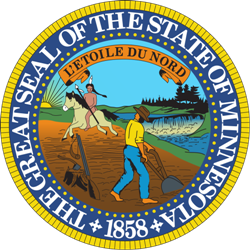Divided We Stand? Minnesota Eyes Two More Years of Divided Government After 2022
Minnesota has had unified partisan control of the governorship and legislature for just two of the last 31+ years

Over the last quarter-century, the state has elected a third-party candidate governor (1998), endured a protracted U.S. Senate recount and court challenge that left a seat vacant for more than a half-year (2008-2009), witnessed the resignation of a U.S. Senator under pressure from his own caucus (2018), hosted the nation’s only U.S. House seats to flip red during the 2018 Democratic wave, and – currently – is the only state in the nation to have divided control of the state legislature. [Note: Alaska’s legislature is quasi-divided, with Republicans controlling the senate and the House led by a coalition of Democrats, independents, and Republicans].
Meanwhile, even as the DFL has carried every statewide election since 2008, the GOP has won a majority of legislative seats on the ballot in the state Senate (2010, 2016, 2020) and state House (2010, 2014, 2016) in three elections for each chamber during this period.
With all state elected offices on the ballot this November, the 2022 cycle is poised to write another chapter documenting the state’s divided electorate: the DFL is fairly optimistic it will hold the governorship while Republicans like their chances – pending the drawing of legislative districts – to flip the house and hold the senate.
If that happens, Minnesota will continue a trend that has persisted in the state for nearly the entirety of the past 30+ years.
Since the Election of 1990, no political party in Minnesota has enjoyed unified control of the executive and legislative branches save for a two-year stint nearly a decade ago – following the Election of 2012 during the 88th legislative session.
DFL Governor Mark Dayton was in the middle of his first term and the party erased deficits in both chambers following redistricting to flip the state Senate and the state House.
The DFL reign was short-lived, however: although Dayton won a second term in 2014, Republicans took back the House that cycle and the Senate in 2016.
Minnesota is one of 13 states in which one political party does not currently enjoy outright control of both of these branches of government, along with Alaska, Kansas, Kentucky, Louisiana, Maryland, Massachusetts, Michigan, North Carolina, Pennsylvania, Vermont, Virginia, and Wisconsin.
Minnesota is also currently tied with three other states (Maryland, Massachusetts, and Pennsylvania) for the longest active stretch of divided government with each state last having one party control the governorship and the legislature in 2014 (Democrats in Maryland, Massachusetts, and Minnesota and Republicans in Pennsylvania).
Republicans in Minnesota, meanwhile, have not held the governorship and both chambers since 1970: GOP Governor Harold LeVander was retiring at the end of his first term and the conservative caucus enjoyed double-digit seat advantages in the House and Senate. [Legislators were elected without party affiliation from 1913 through 1972].
Since 1990, the party of the sitting governor in Minnesota has not controlled either legislative chamber for 20 of these 31+ years (1991-2002, 2007-2012, 2017-2018).
The governor’s party has controlled one chamber for 11+ years (2003-2006, 2015-2016, 2019-present).
Follow Smart Politics on Twitter.

I know two people from Minnesota. One is very conservative and one is very liberal. My point is that neither of them was “very” anything five years ago. I love both of them and I cannot talk about politics with them because is overwhelms every conversation and I don’t share many of either of their opinions. The only point I make is that everyone in MN seems to be getting into politics and the two main sides seem to be getting further apart on their opinions on every social-political and geo-political topic. Anyway, thanks for sharing. Cheers. Jen